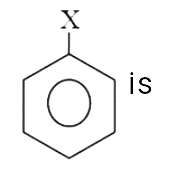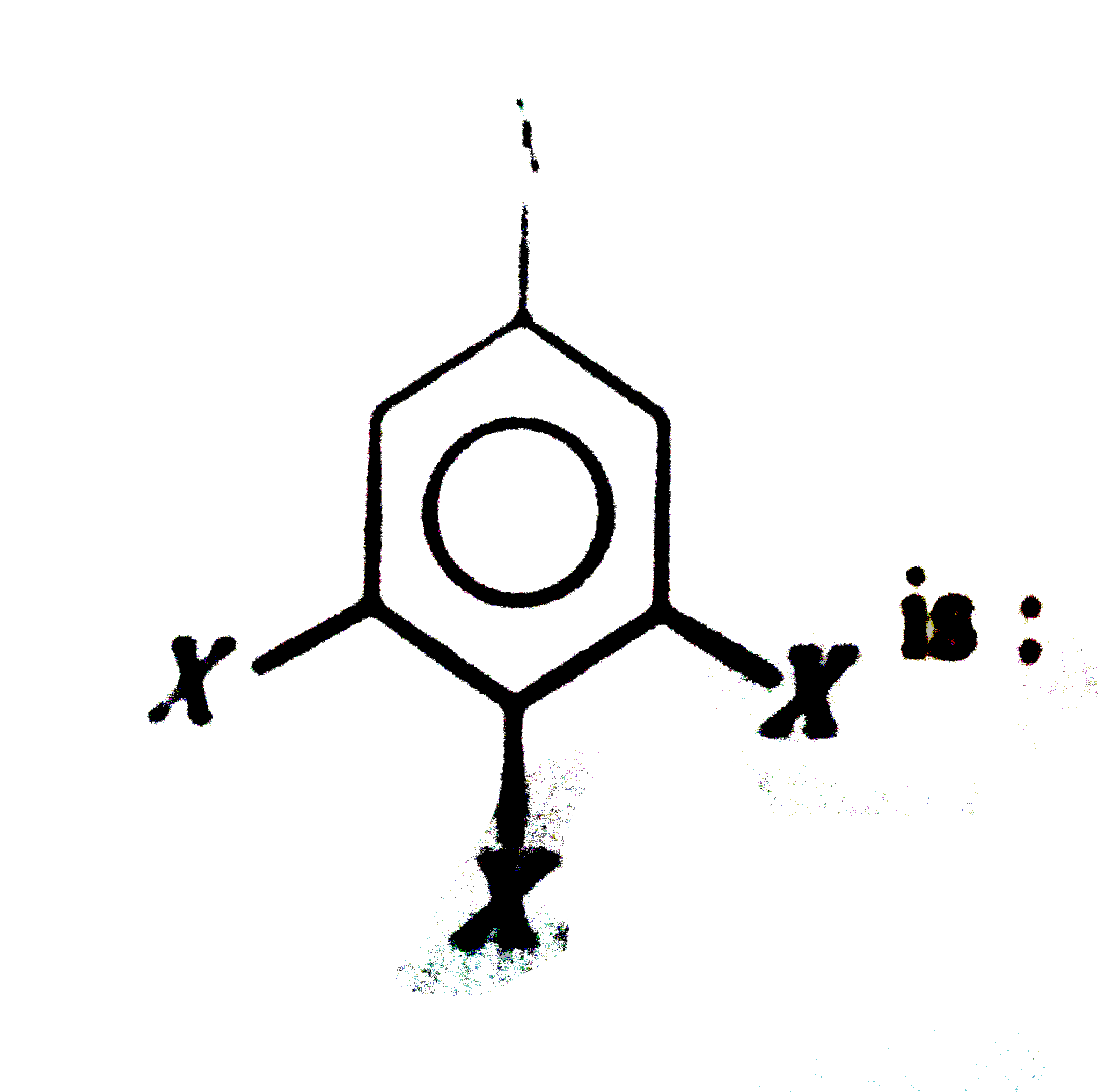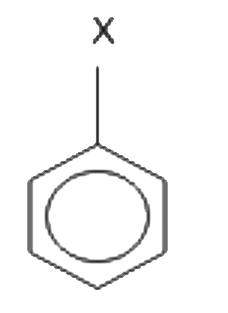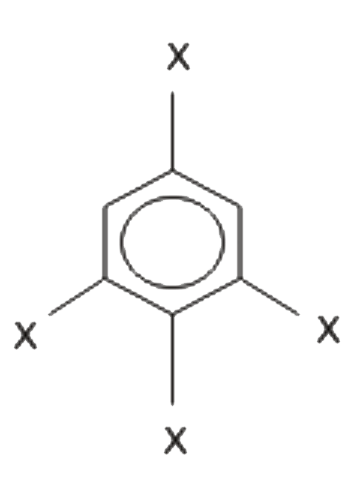Calculate the percent ionic character of HCl. Given that the observed dipole moment is 1.03 D and bond length of HCl is 1.275 .
To calculate the percent ionic character of HCl, we will follow these steps:
Step 1: Understand the Given Data
We have the following data:
- Observed dipole moment (μ_observed) = 1.03 D (Debye)
- Bond length (l) = 1.275 Å (angstroms)
Step 2: Convert Bond Length to Centimeters
We need to convert the bond length from angstroms to centimeters for our calculations:
1 Å = 1×10−8 cm
Thus,
l=1.275Å=1.275×10−8cm
Step 3: Calculate the Dipole Moment for 100% Ionic Character
For a completely ionic bond, the dipole moment (μ_calculated) can be calculated using the formula:
μcalculated=q×l
where q is the charge. For a fully ionic bond, the charge q is equal to the charge of an electron, which is approximately 4.8×10−10 esu (electrostatic units).
Now, substituting the values:
μcalculated=(4.8×10−10esu)×(1.275×10−8cm)
Calculating this gives:
μcalculated=6.12×10−18esu cm
Since 1D=10−18esu cm, we can convert this to Debye:
μcalculated=6.12D
Step 4: Calculate the Percent Ionic Character
Now we can use the formula for percent ionic character:
Percent Ionic Character=(μobservedμcalculated)×100
Substituting the values:
Percent Ionic Character=(1.03D6.12D)×100
Calculating this gives:
Percent Ionic Character≈16.83%
Final Answer
The percent ionic character of HCl is approximately 16.83%.
---
We have the following data:
- Observed dipole moment (μ_observed) = 1.03 D (Debye)
- Bond length (l) = 1.275 Å (angstroms)
We need to convert the bond length from angstroms to centimeters for our calculations:
1 Å = 1×10−8 cm
Thus,
l=1.275Å=1.275×10−8cm
For a completely ionic bond, the dipole moment (μ_calculated) can be calculated using the formula:
μcalculated=q×l
where q is the charge. For a fully ionic bond, the charge q is equal to the charge of an electron, which is approximately 4.8×10−10 esu (electrostatic units).
μcalculated=(4.8×10−10esu)×(1.275×10−8cm)
μcalculated=6.12×10−18esu cm
Since 1D=10−18esu cm, we can convert this to Debye:
μcalculated=6.12D
Now we can use the formula for percent ionic character:
Percent Ionic Character=(μobservedμcalculated)×100
Substituting the values:
Percent Ionic Character=(1.03D6.12D)×100
Percent Ionic Character≈16.83%
The percent ionic character of HCl is approximately 16.83%.
Topper's Solved these Questions
- BOOK - VMC MODULES ENGLISHCHAPTER - CHEMICAL BONDING-I & IIEXERCISE - Level - 0 (Long Answer Type)4videos
CHEMICAL BONDING-I & II
- BOOK - VMC MODULES ENGLISHCHAPTER - CHEMICAL BONDING-I & IIEXERCISE - Level - 1 (JEE Main)75videos
CHEMICAL BONDING-I & II
- BOOK - VMC MODULES ENGLISHCHAPTER - CHEMICAL BONDING-I & IIEXERCISE - JEE Advanced (Archive)98videos
CHEMICAL BONDING-I & II
- BOOK - VMC MODULES ENGLISHCHAPTER - CHEMICAL BONDING & MOLECULAR STRUCTURE EXERCISE - IN-CHAPTER EXERCISE-L9videos
CHEMICAL BONDING & MOLECULAR STRUCTURE
- BOOK - VMC MODULES ENGLISHCHAPTER - CHEMICAL EQUILIBRIUMEXERCISE - IN-CHAPTER EXERCISE - G10videos
CHEMICAL EQUILIBRIUM
Similar Questions
The dipole moment of
 is 1.5 D.
is 1.5 D.
The dipole moment of is View Solution
is View SolutionCalculate the percentage of covalent character of HX having bond length = 1.62 Å and observed dipole moment = 0.39 D.
View SolutionDipole moment of
 is 1.5D. The dipole moment of
is 1.5D. The dipole moment of
 View Solution
View SolutionThe dipole moment of
 is 1.5 D.
is 1.5 D.
The dipole Moment of
in Debye is ___View SolutionDipole moment of HBr is 0.78 D and interatomic spacing is 1.41Å. Calculating percentage ionic character of HBr. [Given :1D=10−18 esu cm, e=1.6×10−19C=4.8×10−10esu.]
View SolutionWhat inferences would you derive from the following observations?
dipole moment of H2O is 1.85 D.View SolutionPolar covalent molecules exhibit dipole moment. Dipole moment is equal to the product of charge separation , q and the bond length d for the bond. Unit of dipole moment is debye. One debye is equal to 10−18 esu cm.
Dipole moments is a vector quantity. It has both magnitude and direction. Hence, dipole moment of a molecule depends upon the relative orientation of the bond dipoles, but not on the polarity of bonds alone. A symmetrical structure shows zero dipole moment. Thus, dipole moment helps to predict the geometry of a molecules. Dipole moment values can be distinguish between cis- and trans- isomers, ortho, meta and pare-forms of a substance, etc.
Q. A diatomic molecule has a dipole moment of 1.2D. If the bond length is 1.0×10−8 cm, what fraction of charge does exist each atom?View SolutionPolar covalent molecules exhibit dipole moment. Dipole moment is equal to the product of charge separation , q and the bond length d for the bond. Unit of dipole moment is debye. One debye is equal to 10−18 esu cm.
Dipole moments is a vector quantity. It has both magnitude and direction. Hence, dipole moment of a molecule depends upon the relative orientation of the bond dipoles, but not on the polarity of bonds alone. A symmetrical structure shows zero dipole moment. Thus, dipole moment helps to predict the geometry of a molecules. Dipole moment values can be distinguish between cis- and trans- isomers, ortho, meta and pare-forms of a substance, etc.
Q. Which is a polar molecule?View SolutionPolar covalent molecules exhibit dipole moment. Dipole moment is equal to the product of charge separation , q and the bond length d for the bond. Unit of dipole moment is debye. One debye is equal to 10−18 esu cm.
Dipole moments is a vector quantity. It has both magnitude and direction. Hence, dipole moment of a molecule depends upon the relative orientation of the bond dipoles, but not on the polarity of bonds alone. A symmetrical structure shows zero dipole moment. Thus, dipole moment helps to predict the geometry of a molecules. Dipole moment values can be distinguish between cis- and trans- isomers, ortho, meta and pare-forms of a substance, etc.
Q. Which is a polar molecule?View SolutionCalculate the bond energy of H-Cl bond, given that the bond energies of H–H, CI—Cl bonds are 433kJmol−1and242kJmol−1 respectivly. The ΔHf for HCl is -91 kJ mol−1.
View Solution

